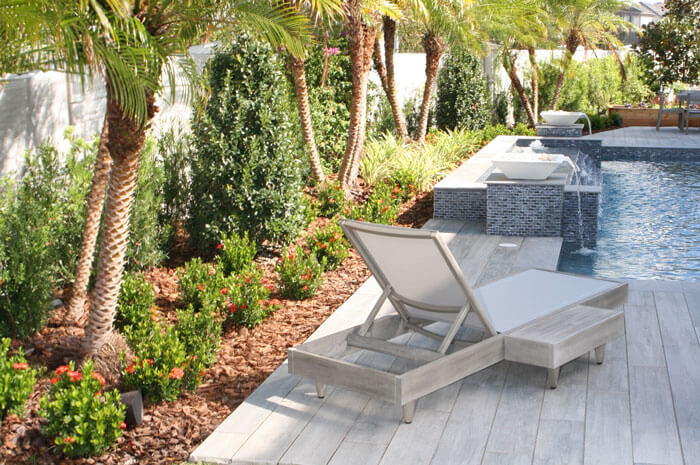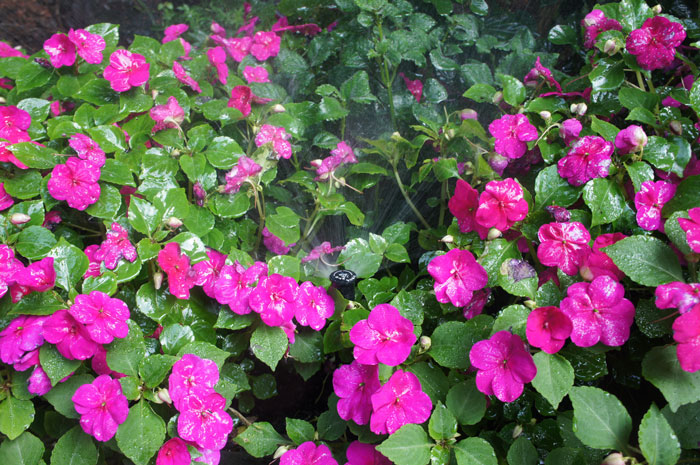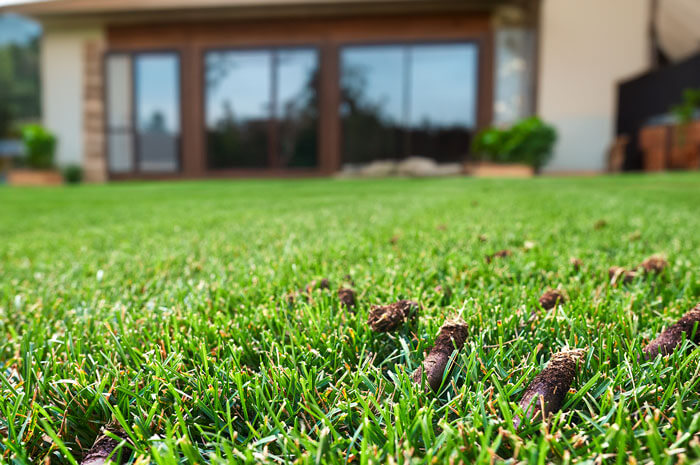
A healthy-looking landscape is not only visually appealing, experts say it can increase your home’s value by as much as 15%. For many of us, summertime means watering time. We know that stablishing and keeping that lush green lawn depends on proper moisture levels. But what about the rest of the landscape? Keeping your plants, trees, and shrubs healthy can be easier and more efficient with a few key watering tips and techniques.
Trees
Newly planted trees will require more water than trees that are well established in the landscape. Depending on your location and soil type, new trees can require daily watering for the first two weeks with as much as 20 gallons of water per week. Water deeply, adding enough moisture to thoroughly wet the root zone. Proper watering allows new trees to develop strong, deep growing root systems. Be patient, it can take new trees about two years to become established.
For mature trees, a simple soil test can help determine if it’s time to water. Grab a spade or trowel and dig a small hole under the tree. If the soil is moist 9 inches below the soil, the tree is getting enough water.
With both newly planted and mature trees, it’s best to water in a slow and deep manner. Deep, infrequent watering with bubbler sprinklers or drip irrigation delivers the water slowly, giving the roots time to soak up the moisture and encourage deep root growth.
Shrubs and Blooming Plants
If the soil is dry 4- to 6 inches below the surface, it’s time to water your shrubs, annuals, and perennials. All these landscape plants perform best with consistent watering. One of the best ways to water them is with drip irrigation. Drip irrigation delivers water in a slow and steady manner to the soil. “It is the most efficient way to water your plants,” says Alexis Deasy, senior marketing communications manager at Toro. “Drip irrigation is up to 90% more efficient than other watering methods because it delivers the water right where the plants need it – right to the root system.”
Agricultural professionals have relied on drip irrigation for years because in addition to being best for the plants, drip can also save money. Because there is less evaporation and overspray, it is estimated that drip irrigation can save up to 70% of the water you use, making it good for the environment and your budget.
Drip irrigation is easy to install and works with either in-ground sprinkler systems, hooked to your hose or as an attachment to your outdoor faucet. These systems are one of the most efficient ways to water shrubs, flowers, vegetable gardens and event window boxes! Installation can be a great DIY project because it is as easy as 1-2-3. Step one is connecting your drip system to a water source. Step two distributes the water directly to the plants. Step three connect the emitters or micro sprinklers that deliver the water. Individual parts make it easy to expand or customize your drip system. Check out this video to learn more. If doing it yourself seems like too big a task, your local irrigation installer can help develop a system to fit your needs.
Don’t forget to mulch! Adding a 3- to 4-inch layer of organic matter, such as woodchips, around your trees, shrubs and flowers not only reduces weed growth, it helps retain moisture. Be sure you’re not placing the mulch right up against the tree trunk or base of the plants. Leaving a space of about 12 to 18 inches gives the plants room for healthy root growth and discourages pests.
These smart watering techniques can help you protect your investment, save water, and create a beautiful landscape, giving you more time to enjoy the season!



